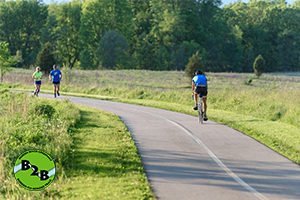News to us provides updates on Border to Border trail construction, the Gelman Plume and monitoring harmful algal blooms. A recent study shows how the angler community in Michigan is changing. And if you are interested in a deeper dive on today’s most pressing environmental issues, we have a reading list for you.

Groundbreaking Ceremony Held For Next Construction Phase Of The B2B Trail A little cold didn’t stop a ceremony to celebrate the beginning of construction of a 1.2 mile extension of the Washtenaw County Border to Border trail. The new trail will continue the trail from Dexter-Huron Metropark to Zeeb Road and will follow the Huron River.
More women are fishin’—but not enough to offset the drop in men Angling is an important economy in Michigan that depends on clean, healthy rivers and lakes. Read about recent trends in the fishing community and how the demographics are changing.
Ten Of The Best Books About Climate Change, Conservation And The Environment of 2018 Compiled by a science writer and journalist, this reading list provides a summary of ten books on the environment published last year. If you are hungry for a deeper read on key environmental issues, look no further.
7 locations being tested for dioxane along Ann Arbor’s Allen Creek When dioxane showed up in Ann Arbor’s West Park, concern grew that the contaminated water could be making it to the Huron River through the stormwater system. DEQ is now testing water in stormwater pipes determine if the dioxane is making into the pipes. This article also updates readers on some of the legal action associated with the dioxane plume in groundwater beneath Scio Township and Ann Arbor.
Monitoring algal blooms in the Great Lakes Basin Learn about how scientists monitor water for harmful algal blooms in the Great Lakes and how research is helping understand the source of nutrients that contribute to these blooms. This information can be used to target efforts to reduce nutrients and can help predict HABs before they begin. This is useful in Lake Erie where HABs have become more common, more severe and affect drinking water.



